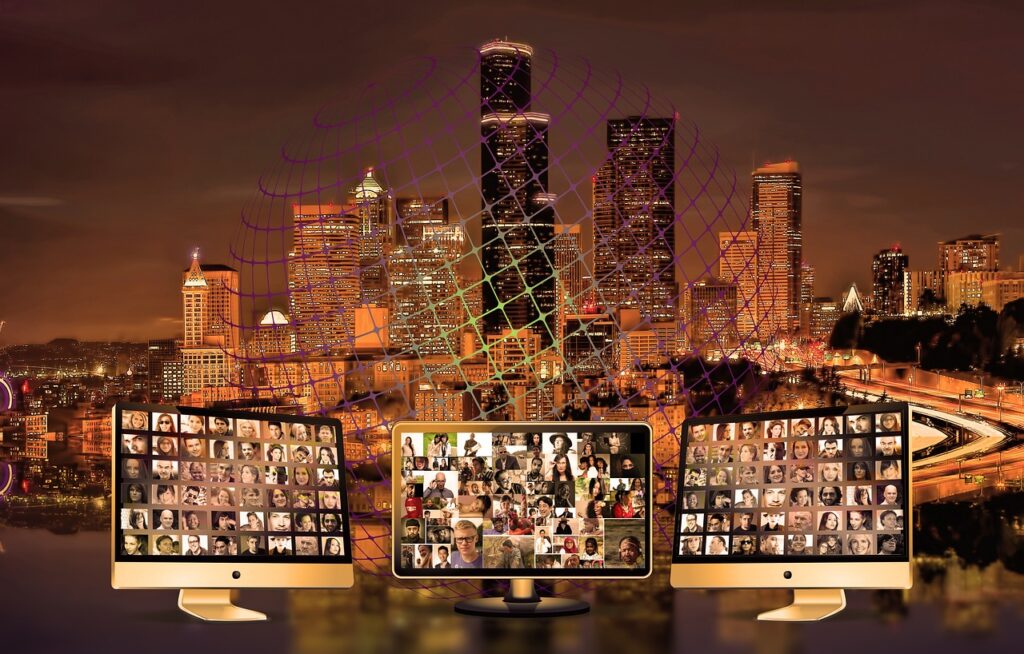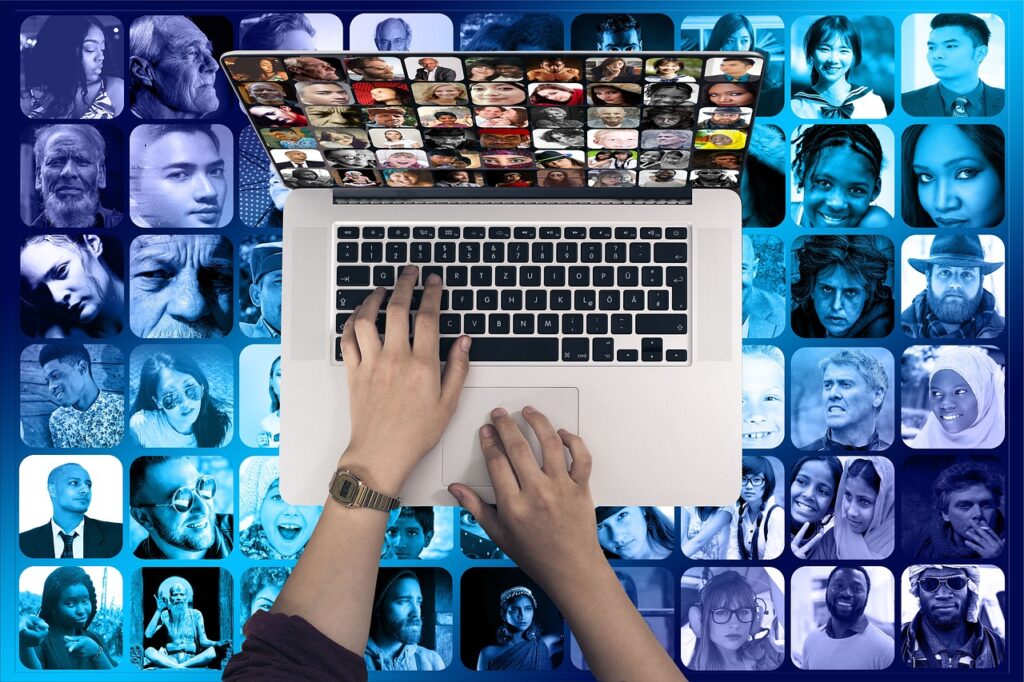Introduction
Employers and employees face advantages and challenges due to the growing integration of digital technologies into every area of our lives. How can an organization balance the needs of its consumers and employees while embracing the reality of the modern digital world, putting it to use, and being open to future innovations? Workplace culture quickly changes in the era of applications and software to mirror modern standards. This is especially true of how we communicate now that instantaneous interactions and globalism have become the standard. Of course, this also causes changes in etiquette. The boundaries between what is and isn’t socially acceptable in the workplace are changing.
With that in mind, it is now essential to understand how, in the digital age, etiquette in general and office etiquette in particular are changing. In the US alone, remote labour has significantly increased since 2005, and the rest of the world follows. It might be challenging to learn the office rules in today’s digital workplace, let alone to keep yourself reminded to abide by them. Here are some guidelines that everyone using a digital workplace should remember. However, keep in mind that this advice is not universal and may or may not apply to you since no one likes an etiquette police officer, whether they are in person or online.
Changes in the World of Work in the Digital Age
Automation and digitization are challenging long-held beliefs about work and workers. Traditional workplaces are changing because of digitization, which also changes our perceptions of how we work. The standards for professional interactions are changing as we live in a more digitally connected environment. Professional etiquette in the digital age is crucial for your life and career because the introduction of emails, video meetings, and social media has changed the corporate environment.
1. Modern Methods of Communication
Writing-based online platforms like email and the Internet are being used to increase online communication. This is becoming more and more true as more employees work remotely. The apparent result of more written communication is less verbal conversation. The tone of voice and numerous other cues that aid in understanding occur with verbal communication. With that, clarity and understanding are likely to occur. This might cause resentment or worse, which would hurt the office atmosphere.
2. Eliminating Taboos
Understanding how outside technologies fit into working culture is a continuing challenge in contemporary companies. New technologies like cell phones and social media platforms have emerged as indispensable tools outside the workplace. However, there has been a backlash against them in the workplace, as employers are wary of any employee’s social media usage, and having a phone on during the workday is viewed as unprofessional. Only recently has this started to alter. Businesses are beginning to use internal social media platforms and permit intranet access via mobile devices for their staff. Many people still need to learn to use digital technology. Still, this naiveté won’t hold for very long, and businesses that take advantage of technology will quickly outperform those that don’t.
3. Increasing Skills Gap
With the influx of Millennials into the workforce, it is usual for businesses to manage multiple employee generations simultaneously. Every generation has a unique work ethic, taste, and set of talents. The most technologically proficient generation, millennials, are known to adopt new technology and computer skills more readily. The way that more roles have been digitized because of the onslaught of technology is an intriguing trend. The generational skills gap worsens as Millennials flood the workforce, frequently in search of these digital professions. Since there isn’t a one-size-fits-all approach to luring in new hires, ensuring a positive onboarding experience, and encouraging more participation throughout the board, this necessitates more personalization on the part of the business.
4. Blurred Lines Between Work and Leisure
The distinction between work and play has undoubtedly become undefined because of being able to contact someone 24 hours a day or work from anywhere in the world. Today, you can conduct a video conversation while on vacation, send a business email, or ping at strange hours of the night or whenever a work-related thought occurs to you. Hot spots, Wi-Fi, and newer technology make it simpler to access work. Being a workaholic in the digital age has become more straightforward but more flexible.
5. Cognitive Distress
Businesses use technology with the expectation that workers will be more productive, communicate more effectively, and make the most of their time. Ironically, the exact technology created to improve lives is now at the issue’s root. Cognitive overload occurs when a person feels too preoccupied or overburdened to process the information. Employers must be aware of the tools their employees are already utilizing and ensure that any new technology purchased for employee use is practical and accessible to all. Technology will always partially replace human interaction, changing how businesses listen to and deal with their workforce.
Work Etiquette in the Digital Age
The fundamental guidelines for a professional attitude at work—maintaining eye contact, giving a solid handshake, and dressing appropriately—are well-established, and office etiquette gradually changes. But many rules of professional etiquette have now been broken as the office has essentially gone online. Many don’t even blink when tiny kids or animals suddenly appear on Zoom. Casual conversations with team leaders are commonplace, and virtual pub quizzes replace after-work drinks.
Of course, the recent emergence of digital culture has already sparked a cultural shift toward less formal practices and bean-bag seats. Even though hundreds of top-selling corporate etiquette guides are available, few have predicted this extreme change of events. Here are some of the do’s and don’ts in the workplace that experts have highlighted as they consider future digital etiquette.
1. Think before you send an email.
Although it might seem obvious, the quick gratification offered by email can occasionally cause problems. Consider that you can probably produce 70–80 words in a minute. This technique is advantageous when you disagree with an email you got or possibly have new ideas or ways of thinking to recommend. In these situations, it’s pretty simple to become engrossed at the moment and respond bluntly when, if you had taken the time to sit back, read, and reread it, you may have adjusted your response or perhaps decided not to send it at all.
2. Don’t always opt for video conferences
Since video conferencing doesn’t require travelling, it’s simple to use it to replace meetings. Zoom and Teams links have swiftly filled in all the open slots on employees’ calendars. However, the trend is changing. Initially, video conferencing was used to mimic office activities, but after a while, you get video conferencing fatigue. Due to the artificial nature of digital interactions, staying consistently engaged with virtual tools is challenging. Therefore, the desire to organize video conferences at all hours of the day will probably lead to more people using soft collaboration tools.
3. Set up a suitable setting for video calls.
Remember that you invite people into your home when conducting a video conference there. As a result, be aware of your surroundings and remember that some things in our homes may not be amusing or endearing to everyone. To upgrade your home setup, experts advise purchasing some fundamental equipment. For instance, inexpensive lights or an external microphone are worthwhile investments.
4. Always be punctual
On-time is late and early is on time. Punctuality is still the golden norm in professional etiquette today, as it has been for decades. Unfortunately, digital meetings have a unique set of problems with time delays. If you need more time, starting up your device, launching the appropriate program, checking that your microphone and camera are operational, shutting down background bandwidth hogs, bringing up your agenda, and putting up any other pertinent materials might all catch you off guard. Never underestimate how much of a deceptive time-suck reading your email, SMS, Facebook, Twitter, and LinkedIn can be in the moments leading up to something that genuinely counts. One other suggestion that stands out is to “kill notifications.”
5. Think about your word choice and tone.
Checking your tone of voice and using your words carefully when talking, especially for business, are two incredibly crucial skills. Your tone, or the intonation of your voice, and the words you choose are essential for effective communication that builds strong and vital relationships. Even if it sounds dramatic, using poor words in a quick, abrasive tone can ruin a conversation. Imagine how quickly the conversation may be cut short if you come across mistakenly when speaking with the media or collaboration partners. You only have a little time to grab their attention or keep the conversation going, so make the most of it.
6. Effectively Manage Tasks and Information
To minimize distractions and prevent information overload, it is imperative to maintain organization and prioritize your duties. This could entail scheduling certain times for communicating via email or social media, utilizing project management software like Asana or Trello, or taking regular breaks to refuel your mind.
7. Make sure you use the appropriate medium for the appropriate message.
Video conferencing is just one of the available tools; you should rely on something other than it to deliver every necessary information. Once video weariness sets in, file-sharing and instant messaging apps will rank highly among the alternatives. Of course, it is up to management to establish a plan for using collaboration technologies. Still, employees need to make sure they follow it. A straightforward phone call can be more effective than a convoluted email or a protracted video conference.
8. Take a Personal Approach
Company-wide emails and memos could be better. Sending a lengthy document addressed to every employee in the organization or even every team member is the fastest way to get something ignored as “not for me,” given how congested our desks and inboxes are already. While being direct, concise, and transparent in your emails is a fantastic place to start, getting personal requires as few words as possible. Instead, whenever a new team member joins or must use a new system, use visual and interactive content, such as pre-recorded video introductions. Getting personal is extremely important when having difficult conversations and providing critical feedback. Black-and-white communication channels like email and chat apps are infamous for misunderstandings.
9. Consistently Follow Up Task
Although it may not be the most attractive quality in the professional world, follow-ups are crucial and go beyond simply being a requirement of good manners. Consistency establishes your reputation, fosters accountability, enables measurement, and renders you relevant to others. A brief email or phone contact to let your coworkers know there will be a delay is considerably preferable to making them wait for an extended period while you are MIA if you are unable to accomplish your promised chores on time for some reason. Being a reliable team member is crucial, especially when working remotely.
10. Create Explicit Expectations
Along with simple laziness, one of the main reasons follow-throughs are a challenge for remote, digital workers is that commitments or demands could be more precise in the first place. Nobody assumes responsibility when no one is singled out. Remember the following two truths whenever you find yourself in this situation: Everyone’s job is nobody’s job, and There is no such thing as a due date. Managing expectations is the key to interpersonally successful professional relationships. Clear expectations mean dividing the work into separate tasks, deciding on written deliverables, and setting timeframes upfront.
Why is Work Etiquette Important in a Digital Age?

Network-based communication has ingrained itself deeply into our society in the twenty-first century. Thanks to computer technology, we now get information, develop relationships, and conduct business in a completely new and transformative way. Like traditional etiquette, which establishes guidelines for behaviour in social settings, netiquette’s goals are to create and uphold a pleasant and appropriate environment, capture and project a professional image, and comprehend the most appropriate platforms for communicating over network channels. Working etiquette reduces the possibility of misunderstandings, which increases productivity in the digital age.
1. It gives the organization a strong reputation and image
Building a decent reputation over time by continuously displaying good work manners is an excellent strategy. Implementing corporate etiquette can be anticipated to make a great professional impression even if interactions with meaningful relationships are limited online. You also could change how your connections behave during transactions based on such an impression. They might imitate your behaviour and show more admiration or respect for you. As a result, this can strengthen the working connection and foster trust.
2. It may make difficulties more tolerable
Relationships in the workplace can quickly become strained due to conflicts of interest and ideological differences. However, these potential sources of conflict can be efficiently handled by using business etiquette. Remember, it’s challenging to continue to be furious with someone respectful and kind. Additionally, research shows that the need for clarity is fueled by showing respect in the face of differences or a party’s social media ranting spree. In addition, it fosters empathy and understanding rather than severing bonds.
3. It will increase customers’ desire for the company
Since it’s now expected to speak briefly and quickly (primarily online), putting good manners and etiquette into practice in the company has become a successful marketing tactic. It can set a company apart from its rivals and give it a considerably better reputation. A business is always liked when it appears to uphold the most significant standards of conduct. In the corporate sector, it is possible to rely on meticulousness and dedication to producing only the finest to draw in the ideal candidates.
4. It demonstrates preparation for the entire world
Being extremely respectful of cultures and traditions, essential to fostering relationships in the global world, is part of business etiquette. As a result, with etiquette instruction, you can be confident that your business will be accepted by any foreign organization it needs to work with. You can lower your risk of acting in a way that can be interpreted as offensive. Additionally, you may demonstrate the adaptability of your processes. Etiquette will enable you to respond appropriately to the particular requirements of international transactions, whether they are made in person or online.
5. It gives people time to consider their reactions
Using corporate etiquette creates a procedure that helps people process their thoughts more effectively, which is another beautiful benefit. You can avoid becoming reactive, which is emotionally driven, by using proper etiquette. Following etiquette guidelines first allows you to take your time comprehending communications, which makes your responses more reasoned and less triggering. When handling comments on social media, this is quite helpful. Nowadays, internet users post their thoughts so quickly that they regret doing so. You can be sure that when you react to posts, you are never jeopardizing your name, thanks to your dedication to upholding proper business etiquette.
Conclusion
Professional etiquette in the digital age is crucial for your life and career because the introduction of emails, video meetings, and social media has changed the corporate environment. Clear, effective communication is made easier by using good digital manners, which also helps to prevent misunderstandings and boost productivity. In the digital world, professional etiquette is more than just good manners; it’s also about leaving a good impression with each online engagement. Respecting others’ time, communicating clearly, and upholding a standard of professionalism that distinguishes you are all important. Let’s embrace the digital age as an opportunity to demonstrate professionalism, forge closer bonds with others, and advance our enterprises rather than as a challenge.



